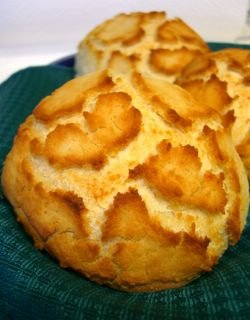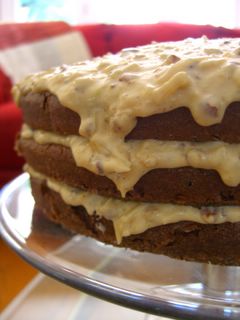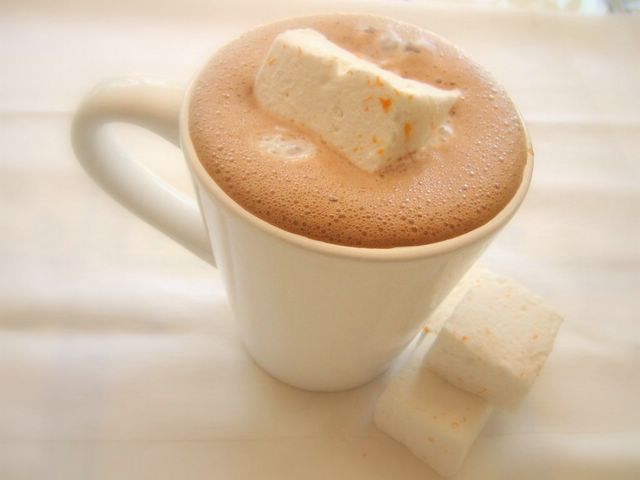Cooking School: Dutch Crunch Bread
I mentioned Dutch Crunch Bread on my list of five things to eat before you die. The name comes from the distinct and unusual topping on the bread, which is made with rice flour, yeast and a little bit of oil, salt and sugar. On its own, the topping is pleasant, but when paired with some good bread, the contrast is amazing.
Thanks to some of my commenters, we know that this bread is called Tijgerbrood, or "tigerbread" in Holland, named after its striped and textured appearence. I didn't stripe mine, which I suppose you could do by running a fork through the mixture before baking, but appearace doesn't take anything away from the fantastically crunchy texture and the ever so slightly yeasty taste that complements so many sandwich fillings. It also makes excellent toast.
Sandwiches are my favorite things to make with this type of bread and if I'm at a deli (only in the SF Bay area, the only places I've seen them) that sells them, I will always get it. So, when I make the rolls at home, I like to make them big so that they make hearty, filling sandwiches. The size also provides enough bread to not make the topping overwhelming. The topping can be used on other types of bread, including as a topping for regular sandwich loaves, if you only want a little bit of the "crunch" per serving.
By the way, if you have leftover rice flour at the end of this, just go ahead and make another batch. I usually do. Alternatively, you could use it to make some gluten-free crepes instead.
Dutch Crunch Bread
Bread
2 1/2 tsp active dry yeast (1 packet or 1/4 ounce)
1/4 cup warm water (105-110F)
1 cup warm milk (105-110F) (nonfat is fine)
1 tbsp sugar
2 tsp vegetable oil
1 1/2 tsp salt
2 1/2 - 3 1/2 cups all purpose flour
Topping
(from The Bread Bible
1 tbsp active dry yeast
1/2 cup warm water (105-110F)
1 tbsp sugar
1 tbsp vegetable oil
1/4 tsp salt
3/4 cup white rice flour (not sweet rice flour)
Turn out onto a lightly floured surface and knead for about 4 minutes, until smooth and elastic. Place in a lightly greased by and cover with plastic wrap. Let rise for 1 hour, or until doubled in size.
Once the dough has risen, turn it out onto a lightly floured surface and divide it into 6 equal portions. Shape each into a ball (demonstrated here) and place on a parchment-lined baking sheet. Let rise for 15 minutes while you prepare the topping.
Combine all topping ingredients in a medium bowl and mix very well. Let stand for 15 minutes.
Once the rolls have risen a bit and the topping is ready, spread a generous layer on the rolls, trying to use all the topping in a thick coat on the top and sides. Let rise for another 20 minutes.
Bake at 375F for 25-30 minutes, until well browned. Let cool completely on a wire rack before eating. Store in an airtight container, if necessary.
*You can mix this by hand, too.










